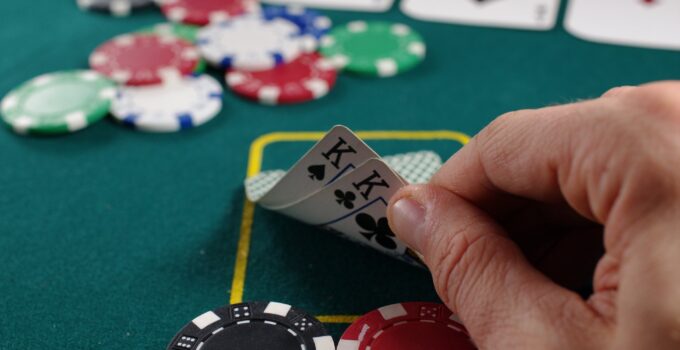Poker is a game of strategy and luck, where players must make calculated decisions to maximize their chances of winning. It takes skill and knowledge to beat your opponents and come out on top. Whether playing poker for fun or professionally, various strategies can help increase your chances of success.
This article will discuss strategies that can give you an edge over other players. We will also provide tips on how to apply these strategies in different scenarios so that you can become a more successful poker player.
Overview of Poker and its Strategies
Source: telegraph.co.uk
Poker is a card game in which players compete to collect money from their opponents. The game’s object is to have the best five-card hand, made up of community cards and personal cards. Players can either check, call, raise or fold based on what they believe to be the strength of their hands.
The strategies used by poker players vary depending on the type of game being played and the opponents at the table. Generally speaking, there are four main types of strategies: tight play, aggressive play, loose play, and semi-bluffing.
- Tight Play: This involves playing fewer hands than your opponents and folding more often so that you don’t risk too much when you don’t have a strong hand. This can help you stay out of trouble and give you more opportunities to win when you have good writing skills.
- Aggressive Play involves betting more often and raising the stakes when you believe your hand is the strongest at the table. This strategy can be very effective in taking down pots, but it also has a greater risk of losing money if it backfires.
- Loose Play: This involves playing more hands than usual, regardless of their strength. It can be helpful as a way to pick up small pots without getting into too much trouble. However, this strategy should only be used occasionally and with caution, as it can lead to losses if your opponents are better players than you.
- Semi-Bluffing: This involves betting and raising even if you don’t have a strong hand, but with the hope that your opponents will fold. This strategy can be dangerous if used too often, as it can lead to significant losses.
Learning to use these strategies effectively in online poker games is key to becoming a successful player. Each method should be employed at different points during the game, depending on your opponents and the situation. It is essential to stay aware of all the factors involved to make the best decision possible in each round of play.
The Basics of Winning at Poker
Source: cnbc.com
To become a successful poker player, it is essential to understand the basics of the game and develop a strong strategy. For example, knowing the odds of sure hands, the probability of winning with particular cards, and how to use bluffing effectively is essential. Additionally, knowing your opponents can help you better anticipate their actions and make more informed decisions.
It is also essential to control your emotions while playing poker, as this can significantly affect your performance. By keeping calm and composed in difficult situations, you will be able to think clearly and make more effective decisions instead of letting your emotions get in the way.
Finally, practice makes perfect – the only way to master poker strategies is by practicing them over time. Take the time to play with friends, try out different scenarios and refine your technique before playing in a real game.
Types of Strategies to Consider in Different Scenarios
Source: pokerhigh.com
Knowing which strategies to use in different scenarios can be the difference between winning and losing at poker.
- When playing a tight game, it is important to make sure that you are only playing hands with good potential and folding more often when you don’t have a strong hand. You should also limit your bets so that you don’t risk too much money on weaker hands.
- Aggressive play can be effective when trying to take down larger pots, but it also comes with greater risks of losses if your opponents have stronger hands than yours. It is important to be aware of what your opponents are doing and think ahead before making any aggressive moves.
- Loose play should not be used too often, as it can lead to significant losses if your opponents have better hands than you. However, it can be useful for picking up small pots without getting into too much trouble.
- Semi-bluffing is a high-risk/high-reward strategy that involves betting and raising even if you don’t have a strong hand, but with the hope that your opponents will fold. This should only be used occasionally as it can lead to significant losses if it backfires.
Final Thoughts on Becoming a Better Player Through Strategic Play
Poker is a game of strategy and knowledge; developing an effective strategy is key to becoming a successful player. It is essential to be aware of the odds, understand your opponents’ tactics, control your emotions during play, and frequently practice to refine your technique. By following these guidelines and utilizing different strategies depending on the situation, you can improve your skills and become a better poker player. With the right combination of craft and design, you will be able to win more often and maximize your profits when playing poker.




